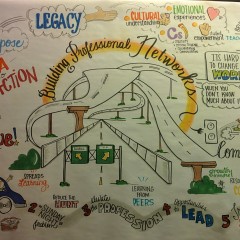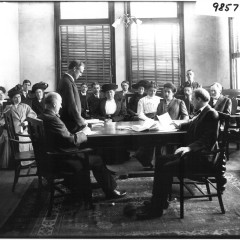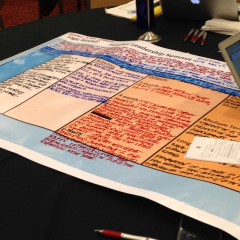Over the next two weeks, thousands of teachers, new to teaching or new to a school district will gather in excitement to learn details about their new jobs. Many of those teachers will find themselves deflated in hours. All too often, new teacher training days end up as Intro to Human Resources 101, far from focused on the realities of teaching and learning. I’ve been witness to such programs and I’ve wondered, what did these teachers get out of this day? Did we just curb their enthusiasm for this job? Did teachers feel supported and mentored and were we (those who put on the training) good stewards of our practice? After all, we know that supporting new teachers can lead to a reduction in attrition and can go a long way for a new teacher and a district.
So how do we balance the paperwork and the practice? What should a new teacher induction program look like? What goals do these programs aspire to meet and how will they evaluate when those goals have been met?
Admittedly, until about six months ago, I hadn’t put much thought into this. I’ve attended our new teacher meeting each year. I’ve seen the revolving door of district staff and administrators introducing our newest staff to the paperwork, policies, and website. I’ve been part of that revolving door, advocating for National Board Certification and working as a mentor teacher over the years. For the most part, I thought that we had done a nice job introducing the new teachers to the must know information for the job. And then I learned about the Beginning Educator Support Team (BEST) program.
BEST is a program designed to help administrators and mentors support novice teachers as they make the transition into the classroom. This program was designed by OSPI (Office of Superintendent of Public Instruction) and funded by the state legislature. The program has three goals:
- Reduce educator turnover.
- Improve educator quality for student learning.
- Ensure equity of learning opportunity for all students.
You will notice that nowhere do you see — “4. Learn how to put in for a substitute teacher when you are sick.”
When our district hired several novice teachers, our assistant superintendent applied for and received a BEST grant. The BEST grant partnered our district with our local ESD to support a year-long mentoring project with our novice teachers. One of my colleagues, Malinda, dove into the work of BEST and attended several academies and conferences, so that she could better understand what supports were needed. Malinda brought back to a team of administrators, instructional coaches, and district support staff a set of standards, created by OSPI and CSTP for Teacher Induction Programs. I should preface this by indicating that I’m not a BEST mentor and I have not been thoroughly trained by our state’s BEST program. However, I’ve seen the impact of that training and having witnessed our first teacher induction program as a result of BEST training,
Our team of instructional coaches, human resource coordinators, building and district administrators came together and studied the standards. We worked independently to see where we were in approaching those standards and we learned quickly that we were deficient in several areas. To respond, our team came together every two weeks for several months to create a game plan for how to meet those standards. Although BEST helps support novice educators, we wanted to ensure that we were supporting veteran teachers who were new to our district, too. Malinda worked diligently to keep us focused on the standards and after months of work, the team established a game plan that included strengthening our hiring process, partnering with local universities, and developing a standards based teacher induction program.
Our new teacher induction program kicked off this week. It is no longer a one day, rotating door meeting. Instead our new teachers began their career in our district with a focused, five day training. Our new teachers (novice and veteran) worked with district administrators, building administrators, instructional coaches, and peer to peer mentors. They met together as a team of new teachers and were also broken into smaller teams, based on buildings/grade levels. They worked to establish procedural plans and assessment goals, and also learned about curriculum and instructional materials. And when the week concluded, the music was cued and the lyrics “Money, money, money, money” by the O’Jays blared while our Payroll Staff handed out paychecks to our new teachers for the week’s worth of time/work. I heard shrieks of excitement and even an “oh my gosh, oh my gosh, oh my gosh!”
So was the work worth it? I sure hope so. It’s too soon to measure whether this induction program is going to meet the three BEST goals. That will be better assessed later in the school year. But anecdotally I feel that we are on our way. I witnessed those smiles and heard those conversations. I spoke with a new-to-us teacher who indicated that he could see our district’s vision being emulated in the staff’s passion for teaching and learning and the work that had been put into planning for the week. Our new teachers felt valued.
A growing attrition rate coupled with a teacher shortage requires that schools and districts critically examine the supports that are in place for new teachers. Supports must include thoughtfully planned, goal oriented, standards based teacher induction programs. If we want to keep good teachers teaching we must demonstrate that we value their professional growth at the onset. Let’s keep these teachers enthusiastic about the work that lies ahead and give them the tools early on so that they may be successful in accomplishing those goals.






